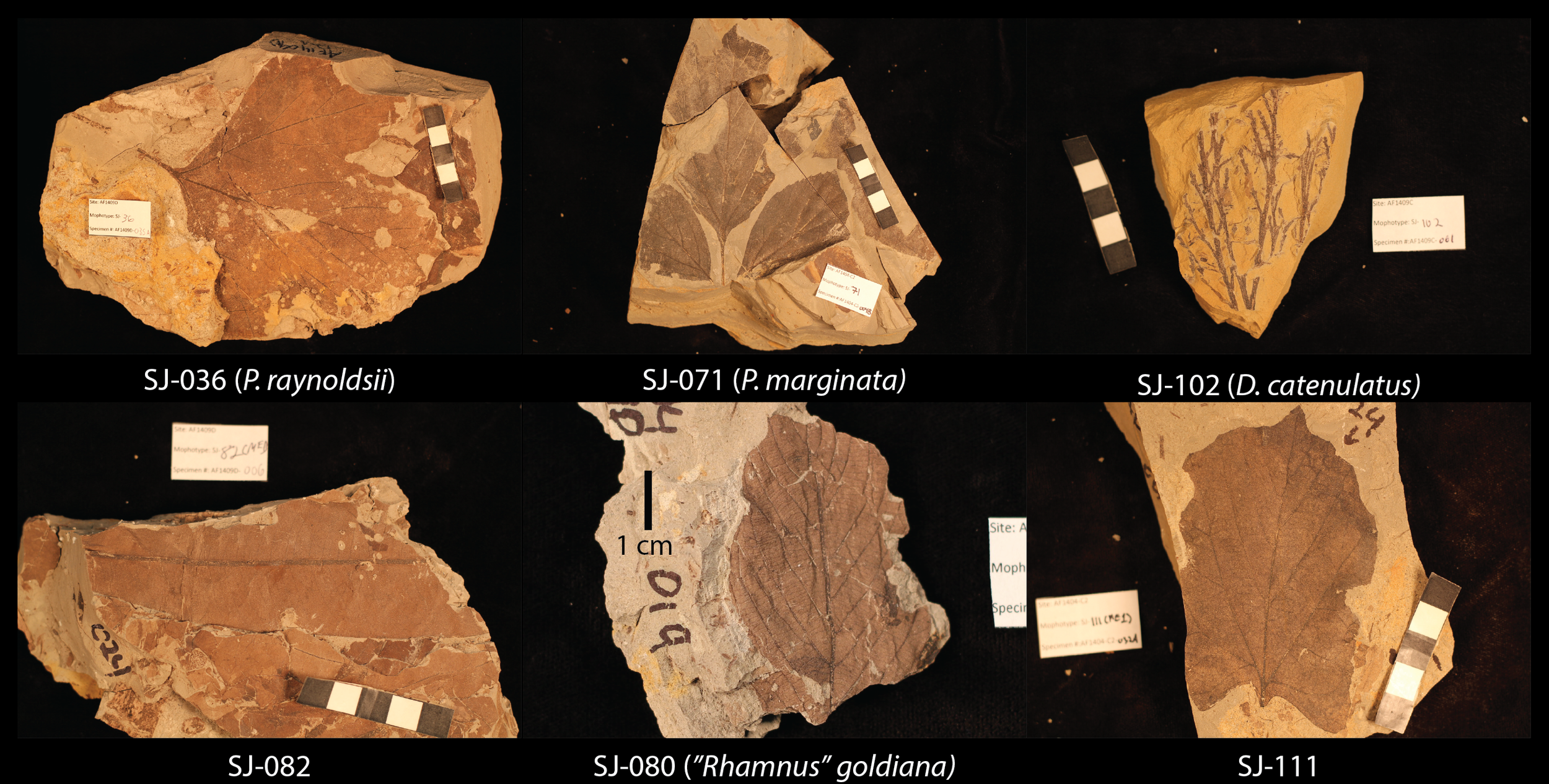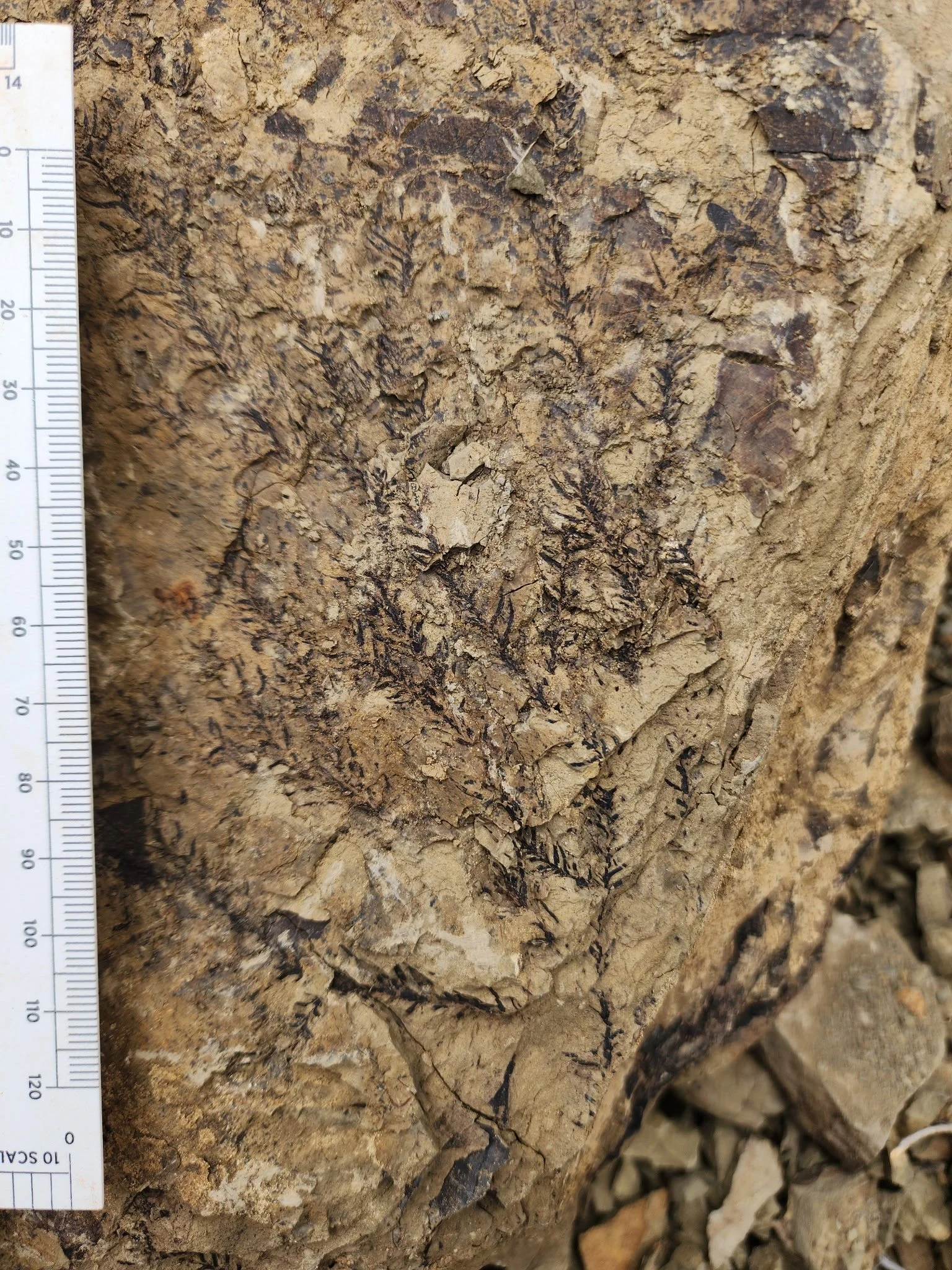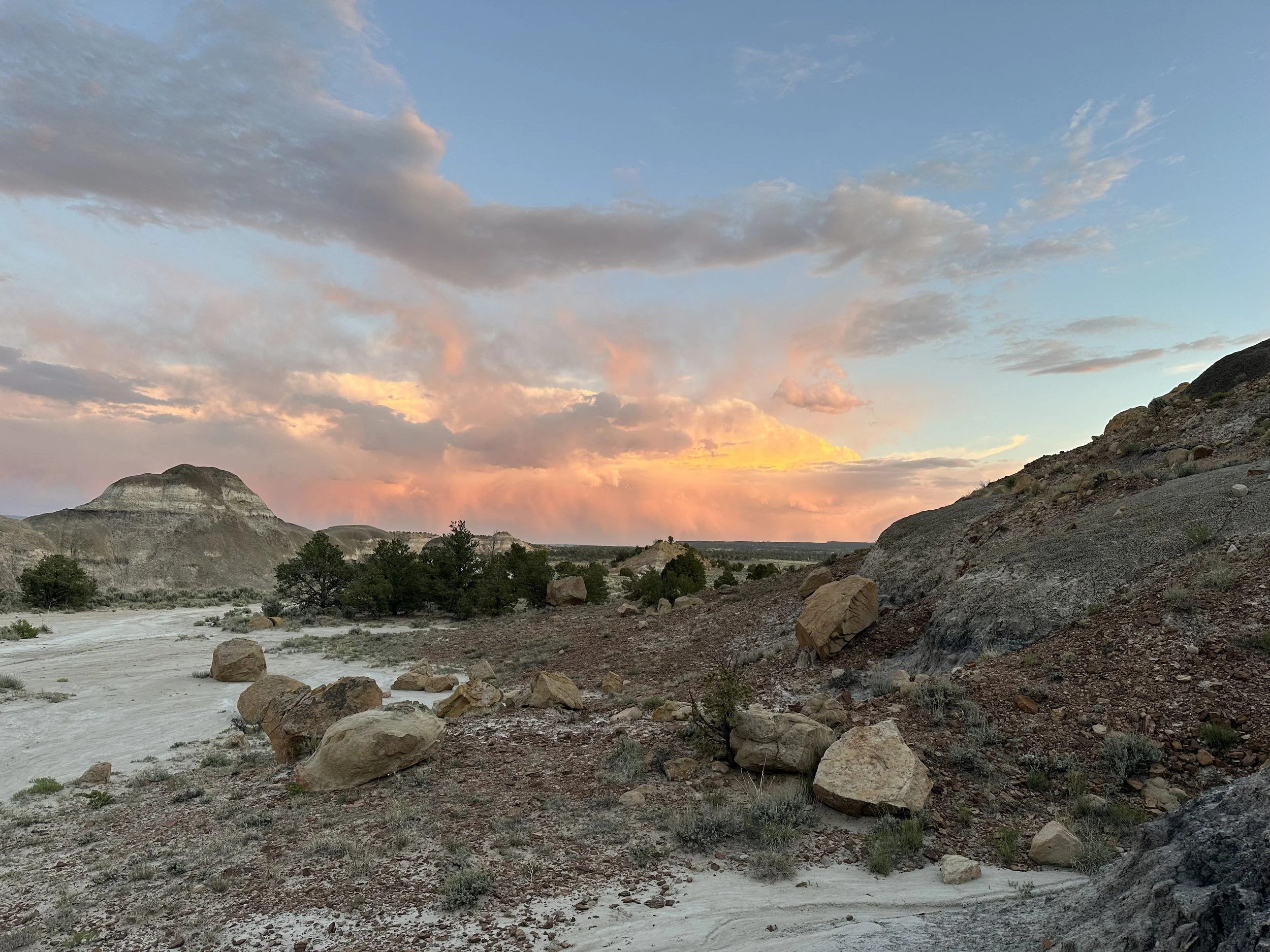
Research Interests
My research is rooted in understanding the deep-time relationship between plants, climate, and Earth’s surface, especially during periods of severe environmental upheaval. I accomplish this by using a combination of paleobotanical, geochemical, and sedimentological methods. I also generate high-resolution age models of these deposits. Current projects (see below) are centered on the late Cretaceous through early Paleogene of western North America with a particular focus on New Mexico.
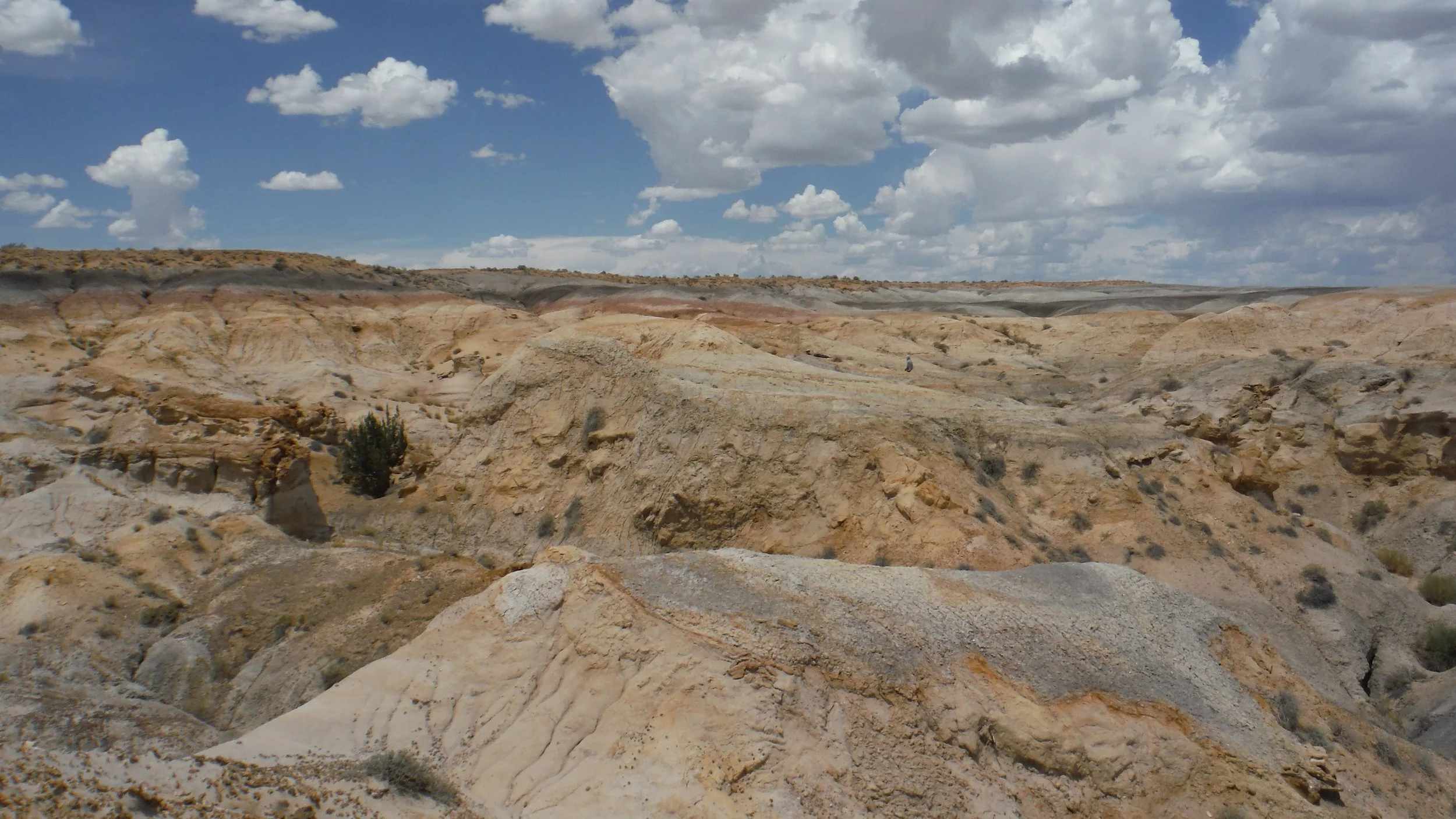
Cretaceous-Paleogene Boundary in the San Juan Basin, New Mexico
The Cretaceous-Paleogene (K/Pg) boundary ~66 Mya famously wiped out the non-avian dinosaurs as well as around 50% of all plant species in western North America. However, well temporally constrained records of the K/Pg boundary are rare limiting our understanding of Earth’s most recent mass extinction. Working with a large team of collaborators in the San Juan Basin of northwestern New Mexico, we (1) developed a high resolution age model across the K/Pg showing the dinosaur fauna of the Naashoibito Member persisted in the San Juan Basin until the end of the Cretaceous, (2) the presence of a diverse fossil flora from the Ojo Alamo Sandstone less than 250 Kyr after the K/Pg boundary, and (3) reconstructed paleoclimate, using fossil plants, indicates a very warm and wet climate analogous to a modern tropical forest.

Early Eocene San Juan Basin, New Mexico
The early Eocene hyperthermal events are a deep-time analog for modern anthropogenic climate change. However, the majority of previous work has focused on northern North America, with little work further south, limiting our understanding of how rapid warming effected plants, animals, and terrestrial environments. The San José Formation in the San Juan Basin of northwest New Mexico preserves an extensive yet understudied succession of early Eocene fluvial deposits. Together with colleagues, our research team is (1) developing a high-resolution age model for lower San José Formation deposition, (2) reconstructing paleoclimate using a variety of geochemical proxies, and (3) collecting a new fossil flora from the lower San José Formation to investigate how climate change impacted floral communities in southern North America.
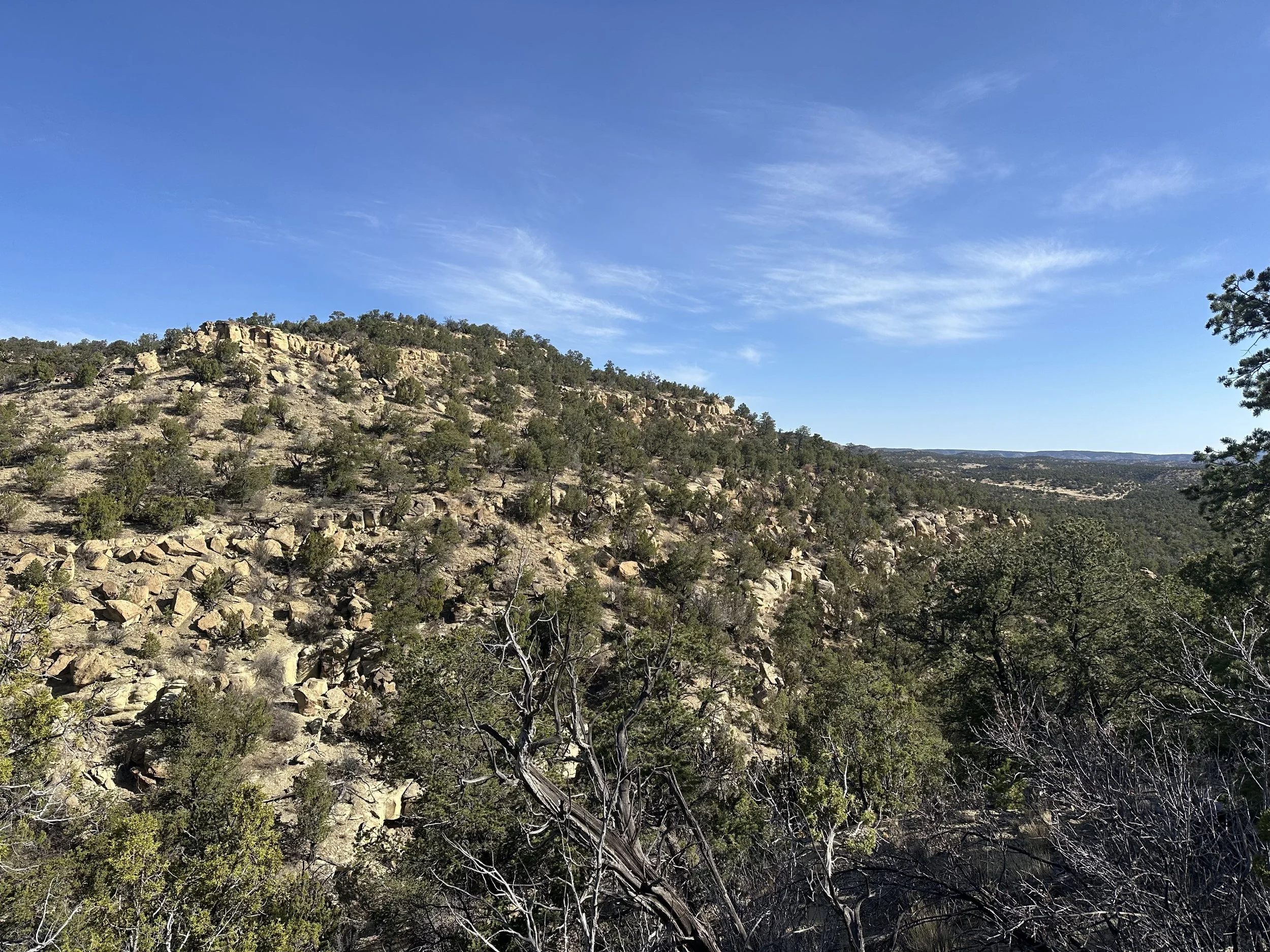
Late Cretaceous (Santonian) of West-Central, New Mexico
The Santonian period of the late Cretaceous is a relatively unknown period in western North America, with few well studied localities. The Crevasse Canyon Formation of west-central New Mexico preserves extensive exposures of Santonian age fluvial deposits presenting an excellent opportunity better understand a relatively understudied period in Earth’s history. Working with colleagues at the Perot Museum of Natural History and the Reynolds foundation, we are collecting new fossil floras from the Crevasse Canyon Formation and building a high-resolution age model to constrain deposition.

Paleoclimate Proxy Development
The size and shape of woody, dicotyledonous angiosperm leaves (Leaf Physiognomy) related to climate
With collaborators, I am currently updating current leaf physiognomy paleoclimate proxies with new modern estimates and revising calibrations
Applying these methodologies to a wide range of late Cretaceous - modern fossil floras to reconstruct temperature and precipitation


